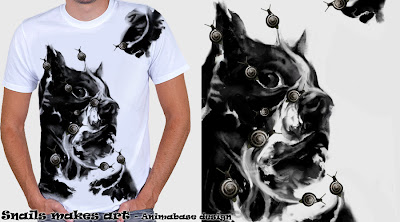
I've been doing some research on a number of artists for my curriculum next year and one such artist is Piet Mondrian. After reading a book on him, I've compiled some information and images and thought I'd share them with you!
 Amazon.com-part of the 'Great Modern Masters' Series of books
Amazon.com-part of the 'Great Modern Masters' Series of books 1. 1. 1872-1944 born Pieter Cornelius Mondrian. He shortened his first name when we moved to Paris in 1912. Bus was born in Amersfoort and is Dutch.
2. 2. His father was a school master and after joining the Academy of Fine Art in Amsterdam he discovered Theosophy and gradually became less Calvinistic.
3. 3. His family was upset when he left his job as an art professor to pursue painting full time.
4. 4. Calvinist upbringing
5. 5. He was rare in that throughout his career he made a living creating ‘hack’ paintings while simultaneously creating his own personal work. He was much criticized by other artists for doing this.
6. 6. His art was a combination of his personality and the style of abstraction and of breaking with traditional classicism that the impressionists enabled their predecessors enabled.
7. 7. Called his work neo-plasticism, which rejected representation, to cleanse the vocabulary and grammar of art.
8. 8. He wanted to articulate and artistic language based on the opposition of horizontal and vertical lines and non-colored planes-the immutable or spiritual element-on the one side, and on the other, the variable or natural element introduced by the proportions between the planes and the relations between the three primary colors as well as between colors and non-colors.
9. 9. Influenced by Bart van der Leck

Ea 10. Early works reflected the warm, moist, foggy Dutch countryside. It also demonstrated recurrent themes of meadows, windmills, and farms using earthy tones that reflected the woodland areas.
1. 11. His was influenced by his uncle Fritz Mondrian who painted in the style of the Hague School.
- The Hague school was like the Barbizon School in France, only it was in South Holland.
- The school tried to distance itself from the academic art and rules, as well as mythological and historical themes. They focused on landscapes of the countryside or the rustic interiors of farms.
 Boat on the Amstel at Sunset 1902
Boat on the Amstel at Sunset 1902
2. 12. After seeing the works of Van Gogh, Kees van Dongen, and Edvard Munch, there is evident of early German Expressionism. His use of color became less natural. However his methodical disposition was antipathetic to any show of emotion shown in the expressionist style.
1. 13. Around 1908-1910 he joined an artist group led by Jan Toorop and adopted Luminist and then Divisionist principles in his art. Luminism was concerned with the exact precise rendering of natural and atmospheric light and the perceived effects of light on objects. Divisionism is considered part of neo-impressionism where everything is broken into colored dots.

1. 15. In 1909-11 he joined the Dutch Theosophical society, where his work became much more symbolic in nature; this style reflected his interest in esotericism.
a. Theosophy ties to unify scientific, philosophical, and religious views into 1 world view.
b. Esotericism is the study of marginal religious or philosophical ideologies.
1. 16. 1911 he was influenced by Picasso and Braque. His move to Paris helped mature his style, although in viewing his early abstract works there is a definite tendency towards synthetic cubism. Guillaume Appolliinaire, a French poet and notable advocate of Cubism, praised the originality of Mondrian’s work. Mondrian kept his studio in France till 1935 with a stipend from the Kroller-Mullers a wealthy industrialist family.
a. Synthetic cubism-flattened areas, more lines, and introduction of collage elements, so music sheets would replace painted representations of music sheets, colored paper would replace painted representations of colored paper. Synthetic cubism evolved from analytic cubism.

1. 17. During the outbreak of WWI Mondrian returned to the Netherlands for 4 years and was influenced by Dutch painter van der Leck, and explored his ideas in the magazine De Stijl, created by artist Theo van Doesburg
1917-1920
2. 18. Mondrian was also influenced in his later work by Theosophist and mathematician M.J. H Shoenmaekers.
- schoenmakers wrote in his essay “The New Image of the World”: “The two fundamental and absolute extremes that shape our planet are: on the one hand the line of the horizontal force, namely the trajectory of the Earth around the Sun, and on the other the vertical and essentially spatial movement of the rays that issue from the center of the Sun…the three essential colors are yellow, blue, and red. There exist no other colors besides these three.”Building on these tenets, Mondrian developed a program that conceived of the work of art as a vehicle for expressing the force and harmony of the universe by exclusively physical means.
3. 19. 1919 Mondrian returns to Paris and his works gains some notoriety thereafter.
4. 20. In 1938 he moved to England to escape the threat of WW II
1. 21. In 1940 he moved to New York and his work took on more emphasis on color (over line).


















